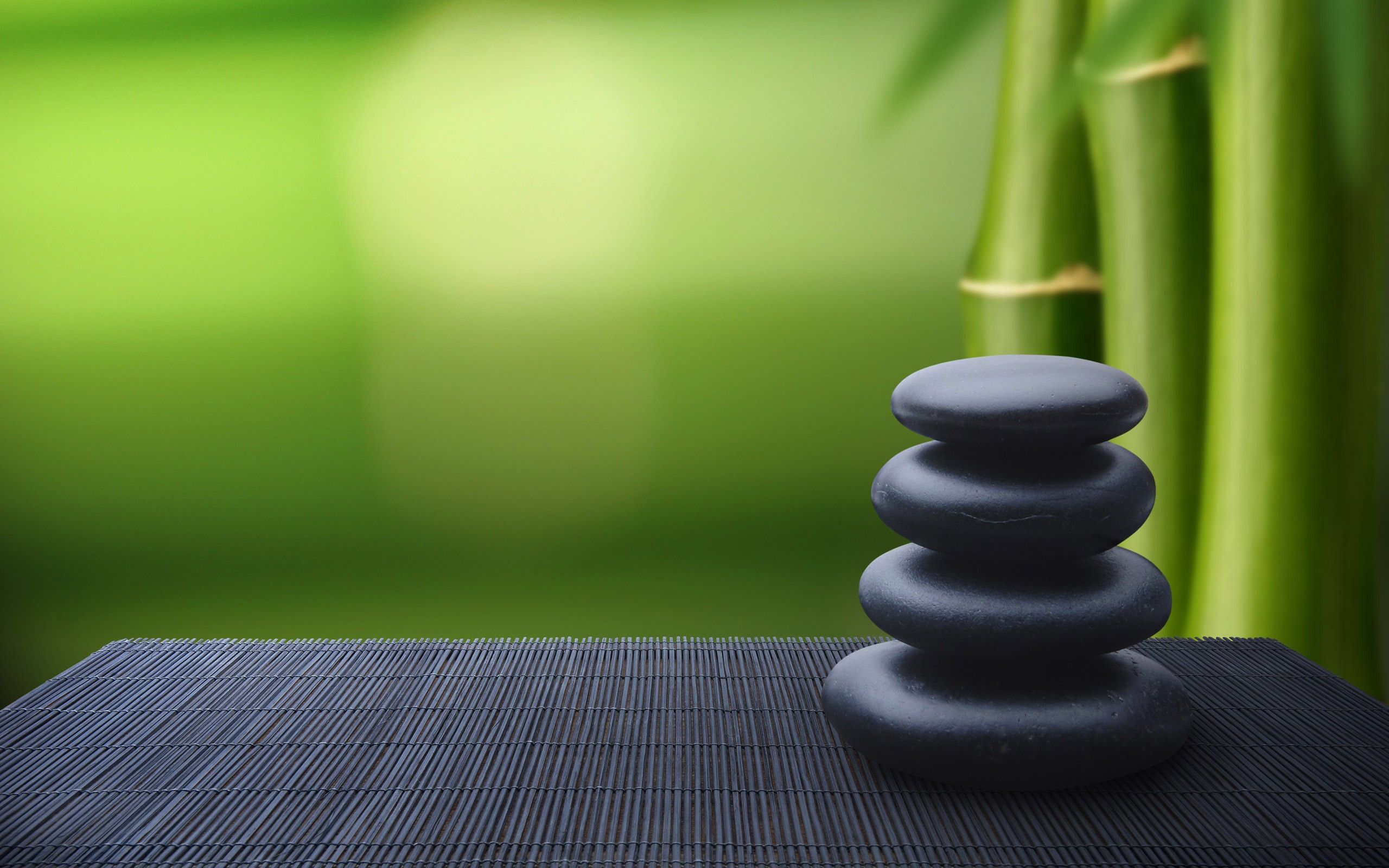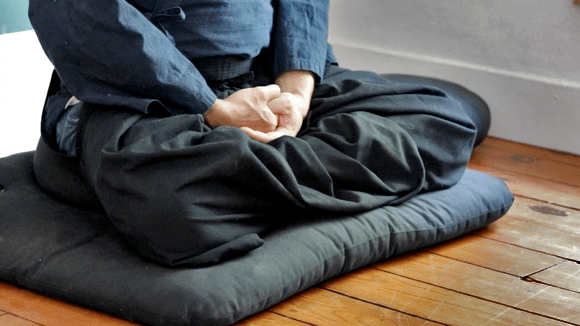Zen Meditation – Guide & Practice – The Meditations
 Posted On
Posted On
Zen meditation is the most commonly considered form of meditation. When someone says meditation, chances are high that you envision somebody sitting with their hands posed in a certain mudra and their eyes closed, chanting “Om.”
While this may sometimes be an accurate depiction of zen meditation, there is still much more to the story than that. Zen meditation may be considered the original form of meditation, considering it has its origins in Buddhism, which is linked to the ancient Vedas in India when meditation first began. Zen meditation is unique in that it may be one of the most difficult forms of meditation to master, but it still happens to be one of the most peaceful variants of meditation once it is done right.
Zen meditation is when you are able to sit in a comfortable position for whatever amount of time you deem necessary as you allow your thoughts to stop having the same importance they do during your conscious life. That doesn’t mean you try not to think. Instead, you acknowledge the thoughts you have as if they were simply the drops of water from a river of consciousness rolling off of your body. They are there, and there is no purpose in stopping them from coming. However, there is also no purpose to linger on them either. So let them pass.
The Practice of Zen Meditation
It is through this practice that we are able to sit in silence for extended periods of time without allowing intrusive and negative thoughts or situations to impact us. We are able to carve out a sanctuary where we give ourselves the freedom to feel peace and unity with our surroundings rather than the stress we tend to feel when we are attempting to control them.

This is also a great way to deal
with cyclical thoughts. If there is something that you are really having a hard
time letting go, zen meditation is a wonderful way to detach yourself from the
negative emotional connotations of the thoughts that are holding you hostage.
You can regain control over your state of mind and find relief from the
crushing weight of a situation that has left you feeling helpless or angry.
Guide To Zen Meditation
As outlined by this guide to meditation, there are several different methods one could use to achieve a peaceful state of mind. If you would like to work on a zen meditation, you will want to set up space for yourself that you can utilize specifically for meditation. That way, you are already sending signals to your brain that it is time to detach even before you sit down. However, if you do not have a specific space set aside for meditation, that is okay too. It does help to meditate in the same place every day, particularly when you are still getting the hang of clearing your mind, but it does not have to necessarily be the case. As long as you are consistently working on it then there is no harm in meditating in a different space every time. After all, your mind remains the same!

Step 1: Prepare Your Atmosphere
If you would like to light candles or play soothing music, this is another thing that can help you to keep your mind clear. There are some zen meditations you can use by simply looking into the flame of a candle and letting yourself focus on that rather than the thoughts that want to come and go in your head. Music can also prove to be a beneficial distraction from your thoughts, but you do not want it to be so distracting that you are sitting there listening to music rather than meditating, though it can be a similar experience in ways.
Whatever method you choose, a zen meditation’s purpose is to help you go above your thoughts and to a place where you are able to see things objectively and with a peaceful air of acceptance.
Step 2: The Acceptance
Acceptance can be one of the most difficult things about experiencing our thoughts. If we are upset about something that has happened to us so it keeps cycling in our minds, that means there is something about that situation that we cannot accept. Maybe we cannot accept someone treating us poorly, or maybe we cannot accept that we are experiencing a loss, because acceptance can make it feel more real that we are ultimately have something to grieve.

But when we learn to accept our thoughts objectively and say to ourselves, “yes, this has happened,” and let that thought go on its course without letting ourselves stay too attached to it, then we are able to really begin to have a healthy compartmentalization in our lives that allows us to view situations with peace and perspective rather than staying mired in the emotional baggage that we are attached to at any given time.
That isn’t to say that our emotions are not important. It can just be counterproductive and stressful to stay emotional about a situation for too long. It can also be dangerous and can lead to depression if we aren’t careful. One of the primary benefits of meditation is enhanced mental health. We are able to handle ourselves better and have a healthier outlook on the situations we find ourselves in. we are better able to focus on goals and plans rather than staying stuck in doubts and hopelessness.
Meditation can be a way out.
Anybody can learn to meditate and clear their minds, even if it seems impossible. There is some form of meditation that suits everybody. Even if you think that it’s too impossible to turn off your thoughts, knowing that the key is in accepting the thoughts as you have them and letting them roll off your back like water will help you to give them an acknowledgment, which is enough to let them go.
If you are trying desperately not to think about something that is bothering you as you meditate, but the thought creeps up again and again, instead of sinking into the negative cycle of obsessing over the situation you are hoping to avoid, rather see the whole situation as a whole if you can. Turn it into a little bead in your mind and say, “yes, this has happened. I acknowledge and accept it and I let it go.” And continue to keep a clear mind.
Step 3: Gestures Practice
Because zen meditation derived from a Buddhist practice, you may also find that learning the different mudras, or hand gestures, that were utilized during meditation in the Vedas, may benefit your meditation experience as well. Some hand gestures were used to invoke certain energies or feelings. For example, the one most people think of when they picture someone meditating, Gyan, or putting your thumb and forefinger together to form a circle, is a mudra that is meant to channel energies that will help you to hone your focus and improve your ability to remember things.
Of course, how well these mudras work for you is really going to depend upon your devotion to Buddhist practices and how much stock you put into the ancient texts. Some of the mudras are meant to harness certain elemental energies that are thought to help with different things in our daily lives. For example, another mudra known as Surya is thought to help harness fire energies within us for the purpose of aiding in our digestion.
Whether you are a believer of the Vedas or simply an onlooker who is curious about ways to improve zen meditation practices, there are benefits to taking the time out of your day to clear your mind and focus on creating an objective space where you can ultimately train yourself to maintain your inner peace throughout the trials and tribulations of your life.
It can sometimes be difficult to detach ourselves from life. Other times, it can be far too easy and we lose sight of the lessons that we should be learning from every situation, whether positive or negative. In either case, meditation can help us to gain more insight into ourselves and our own motivations while helping us to deal with emotional overwhelm and provide ourselves with some balance in times of upheaval.


